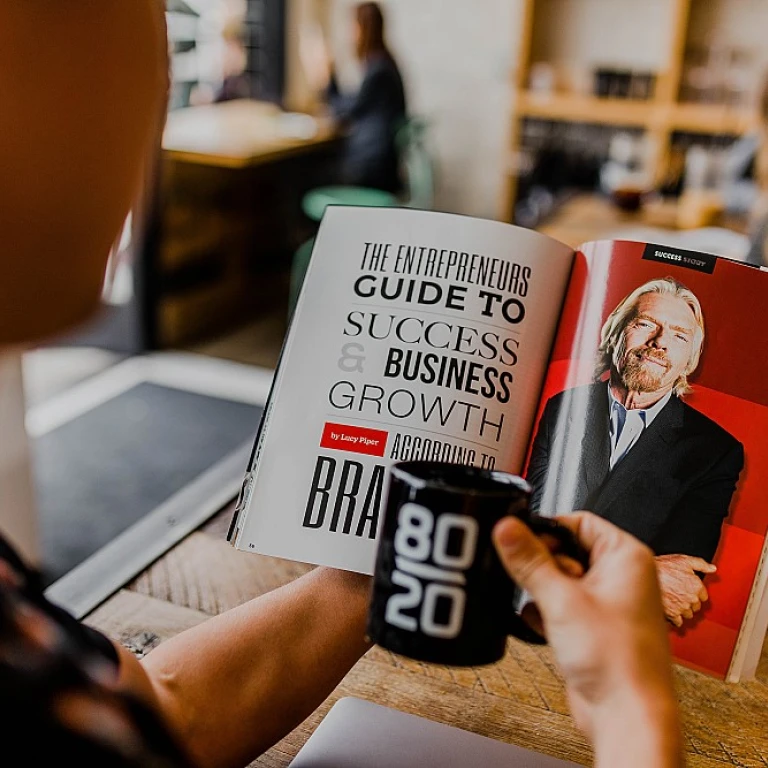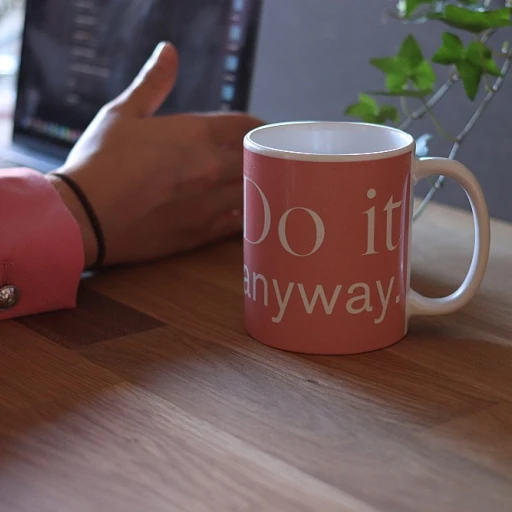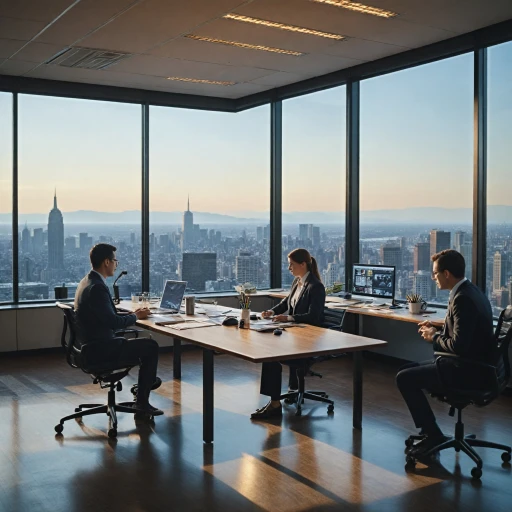Understanding the Current Landscape of the Packaging Industry
Understanding the Current Dynamics of the Packaging Industry
A Snapshot of Market Size and Growth
The global packaging industry has experienced remarkable growth over the past decade, transforming into a behemoth with a market size estimated at USD 917 billion in 2021. Projections indicate that by 2030, the market could reach USD 1.2 trillion, driven by factors such as urbanization, increasing consumer spending, and advancements in technology. The packaging industry is anticipated to grow at a CAGR of 3.4%, per reports from Market Research Future.
Consumer Preferences and Market Demand
Consumer preferences have shifted significantly towards convenience and sustainability, influencing packaging choices across sectors. A survey by McKinsey revealed that 60% of consumers are willing to pay higher prices for products with sustainable packaging. The demand for eco-friendly packaging solutions has never been higher, with consumers pushing businesses to adopt materials that are recyclable, biodegradable, or derived from renewable sources.
Major Players and Regional Insights
The packaging market is highly diverse, with significant contributions from regions like North America, Europe, and Asia Pacific. North America holds a considerable market share, driven by substantial consumer goods consumption and robust supply chains. In the Asia Pacific, growth is accelerated by booming e-commerce industries and mass urbanization, particularly in countries like China and India.
Key Players in the Market:
- Amcor
- Huhtamaki
- Berry Global Inc.
- Sonoco Products Company
Challenges and Regulatory Landscape
The packaging industry faces a slew of challenges, from environmental concerns about plastic waste to stringent regulations from bodies like the European Commission. Companies are caught between meeting consumer demands and adhering to regulatory mandates. Innovations in materials such as flexible packaging and paper packaging are part of the evolving solutions to these challenges.
Technological Drivers of Change
Technological advancements are rapidly transforming the packaging landscape. Innovations like smart packaging, which involves embedding sensors in packaging materials, help monitor product quality, extending shelf life, and enhancing consumer experience. The integration of AI and IoT in packaging processes is expected to create new growth opportunities, making it one of the pioneering trends to watch.
For a better understanding of how these insights connect with the broader strategies of modern businesses, you can read more about decoding the C-suite strategies.
The Rise of Sustainable Packaging: Trends and Innovations
Sustainable Packaging Trends Shaping the Future
The packaging industry is witnessing a significant shift towards sustainable solutions, driven by growing consumer awareness and regulatory pressures. According to a report by Smithers, the global market for sustainable packaging is projected to reach USD 440.3 billion by 2025, growing at a CAGR of 7.7% from 2020.
Eco-friendly packaging has become more than a trend; it’s a necessity. Brands are now actively seeking out sustainable materials such as recycled paper, biodegradable plastics, and plant-based options. For example, Hailey McMahon, an industry expert, notes that “biodegradable materials are not just beneficial for the environment but also appeal to the eco-conscious consumer.”
PWC's 2021 report highlights that 73% of consumers prefer eco-friendly packaging, and 67% are willing to pay a premium for sustainable options. Case in point, Unilever's sustainable packaging initiative resulted in a 15% increase in sales, proving that businesses can indeed leverage sustainable packaging for growth.
Examples of Innovation in Sustainable Packaging
Several companies are leading the charge with innovative sustainable packaging solutions. For instance, Amcor introduced their recyclable AmLite Ultra Recyclable packaging, reducing carbon footprint by 64%. Sonoco Products Company has been at the forefront with its EnviroCan, a paper-based container that’s 100% recyclable.
In the realm of food and beverage packaging, Huhtamaki’s FutureSmart products are made from 100% renewable plant-based materials, reducing dependency on fossil-based plastics and decreasing environmental impact.
Regulatory Forces Driving Sustainable Practices
Several regional regulations are pushing the packaging industry towards sustainability. The European Union’s Single-Use Plastics Directive aims to reduce plastic waste by banning single-use plastic items, which has prompted a surge in alternatives. The European Commission’s New Circular Economy Action Plan also plays a critical role, with a strong focus on sustainable packaging solutions.
In the U.S., states like California have introduced stringent regulations to curb plastic waste, leading companies to adopt more environmentally friendly practices. Colorado’s Plastic Pollution Reduction Act is another example that will come into effect by 2024, banning plastic bags and foam containers.
The Consumer Push for Sustainability
Consumer preferences are heavily influencing the shift towards sustainable packaging. A 2021 survey by GlobalWebIndex shows that 57% of global consumers are actively reducing their plastics use, and 61% believe that companies should be held responsible for the environmental impact of their products.
Consumer demand is not just about reducing plastic; there is a strong push for renewable materials and better recycling practices. This shift in consumer behavior is prompting companies to innovate and adapt quickly to stay relevant in the market.
Looking Ahead: The Future of Sustainable Packaging
The future of sustainable packaging looks promising. Analysts predict that by 2027, the packaging industry will witness an exponential rise in eco-friendly packaging solutions, driven by technological advancements and evolving consumer preferences.
To stay ahead, companies must invest in sustainable innovation, embrace new materials, and adapt to changing regulations—all while keeping the consumer's needs at the center of their strategies. This transformation may be challenging, but the rewards—both economic and environmental—are well worth the effort.
Decoding the C-Suite: What Does C-Suite Mean for Modern Business Strategy further explores how strategic leadership can navigate these challenges and drive growth in the packaging market.
Plastic Packaging: Challenges and Opportunities
Addressing Environmental Concerns and Sustainability Initiatives
The packaging industry, particularly the plastic packaging sector, is under intense scrutiny. With global plastic waste predicted to reach 12 billion metric tons by 2050, the spotlight is on the necessity to develop sustainable solutions (Science Advances). The pressure mounts as consumers demand eco-friendly packaging products, compelling companies to innovate and reduce their ecological footprint.
Market Size and Growth Potential
Despite the negative press, the plastic packaging market continues to grow, driven by its versatility and cost-efficiency. In 2022, the global plastic packaging market size was valued at USD 348.08 billion and is estimated to reach USD 486.2 billion by 2030, growing at a CAGR of 4.1% (Grand View Research). Asia Pacific stands as a major contributor, accounting for over 30% of the market share, fuelled by rapid industrialization and increasing consumer demand (Market Research Future).
Recycling and Innovative Solutions
To counteract the environmental backlash, leading companies are pioneering recycling initiatives. For instance, Amcor, one of the giants in the sector, has committed to making all its packaging recyclable or reusable by 2025. Similarly, Berry Global Inc. is investing significantly in recycling technologies to meet the increasing demand for sustainable packaging products (Amcor Annual Report 2023).
Balancing Costs and Consumer Expectations
Adapting to the dual demands of sustainability and cost-efficiency presents a complex challenge. While consumers prioritize environmentally friendly packaging, they are often unwilling to bear the higher costs associated with such products. Navigating this tightrope requires strategic approaches from businesses. An insightful example is Unilever, which has pledged to halve its non-recycled plastic packaging by 2025 while maintaining affordable product offerings (Unilever Sustainable Living Plan).
Government Regulations and Industry Compliance
Various regions are implementing stringent regulations to curb plastic pollution. The European Union, for example, has banned single-use plastics, pushing companies towards more sustainable practices. The US and China are also introducing policies to limit plastic waste (European Commission). Staying compliant is critical for companies to avoid fines and preserve their market reputation, making it imperative to align with regulatory frameworks and participate in global sustainability efforts.
Case Studies: Key Players in Plastic Packaging
Sonoco Products Company stands out for its robust initiatives in eco-friendly packaging. With a strong focus on recycling, they are setting benchmarks in the industry. Their 'EnviroSense' line emphasizes recyclable, reusable, and compostable solutions, enhancing their market position (Sonoco 2023 Sustainability Report).
Another noteworthy player, Huhtamaki, proactively engages in creating sustainable packaging by leveraging renewable resources. Their transition away from fossil-based materials is a significant step towards a greener packaging industry (Huhtamaki Sustainability Report 2023).
For C-Suite Leaders in packaging, the path forward involves not only embracing sustainable practices but also innovating to meet the complex demands of consumers and regulatory bodies alike. The balance between profitability and responsibility is the frontier of modern plastic packaging.
The Impact of Consumer Preferences on Packaging
Consumer Preferences Shaping the Future of Packaging
In today's fast-paced world, understanding consumer preferences is, well, non-negotiable for the packaging industry. Research reveals that consumers are increasingly leaning toward sustainable packaging options. According to a survey by Nielsen, about 73% of global consumers said they would definitely or probably change their consumption habits to reduce their environmental impact. That’s no trivial number!
The Push for Eco-Friendly Materials
Consumers are driving a hefty demand for eco-friendly packaging solutions. A report by Smithers indicates the market for sustainable packaging is projected to grow from an estimated USD 132 billion in 2020 to an expected USD 225 billion by 2025. This 6% CAGR underscores a massive shift toward materials like recyclable paper and compostable plastics.
Impact of Health and Safety Concerns
Brands must note that safety and hygiene have skyrocketed in importance since the COVID-19 pandemic. Whether it’s food & beverage or personal care products, consumers are willing to pay a premium for packaging they perceive as hygienic. A 2021 study by McKinsey & Company highlighted that some 60% of consumers are now more focused on product safety than they were before.
Convenience Drives Purchase Decisions
Convenience remains a key driver for packaging choices. Think resealable bags, easy-pour spouts, and single-serve packets. According to a 2020 report from Mordor Intelligence, the global flexible packaging market, driven significantly by consumer convenience, is expected to reach USD 250 billion by 2026. Brands like Huhtamaki and Amcor continue to innovate in this space, capturing a larger market share.
Authenticity and Brand Transparency
Consumer demand for transparency is redefining the packaging industry. More than ever, buyers want to know what they are purchasing and who they are purchasing from. A study by Label Insight shows that 94% of respondents are likely to be loyal to a brand that offers complete transparency. This trend is encouraging brands to be more open about sourcing, production, and packaging methods.
Regional Differences in Consumer Preferences
Consumer preferences for packaging can vary widely by region. For instance, in North America and Europe, there’s a huge push for reducing plastic waste and adopting biodegradable materials. Meanwhile, in Asia Pacific, there’s robust growth in the use of flexible packaging due to its cost-effectiveness and versatility. Companies must align their strategies to local consumer demands to capture market share effectively.
Expert Insights
Industry thought-leaders often weigh in on these evolving preferences. Lisa Podos, a senior analyst at Smithers, states, “Consumers are fundamentally changing the packaging landscape, and brands must be agile to meet these evolving needs. Sustainable, convenient, and transparent packaging solutions are no longer optional—they are imperative.”
Brands Responding to Consumer Demands
Many brands have already taken significant steps. For example, Sonoco Products Company announced their commitment to sustainable packaging, aiming for 100% of their packaging to be recyclable, reusable, or compostable by 2025. Similarly, Berry Global Inc. has pledged to deliver 100% recyclable packaging by the end of the decade. These initiatives are not just good for the planet; they are proving to be good for business as well.
The Path Ahead
Consumer preferences are a potent force reshaping the packaging industry. Brands that pivot quickly to these evolving demands will not just survive but thrive. Keeping an ear to the ground and listening to your consumers is more crucial than ever in staying ahead in this billion-dollar market.
Technological Advancements in Packaging
Smart Packaging: Redefining Consumer Engagement
Technological advancements are transforming the packaging industry in unprecedented ways, offering solutions that extend beyond mere containment. Smart packaging has emerged as a significant trend, allowing businesses to rethink how they connect with consumers. According to a report by Smithers, the global smart packaging market was worth $15.8 billion USD in 2020 and is expected to grow at a CAGR of 5.6%, reaching an estimated $23.7 billion USD by 2025.
RFID and NFC: Revolutionizing Inventory Management
Radio-frequency identification (RFID) and near-field communication (NFC) technologies are now increasingly integrated into packaging solutions. These tools help in tracking and authenticating products, thereby enhancing inventory management and reducing shrinkage. For instance, Coca-Cola implemented RFID tags in its supply chain, achieving a 99.9% order accuracy rate and significant operational efficiencies. RFID's ability to streamline processes arguably makes it indispensable in modern logistics.
Augmented Reality (AR): Enhancing Consumer Experience
Augmented reality (AR) in packaging provides an interactive and immersive experience for consumers. A survey by Packaging Digest indicates that 67% of consumers would be more likely to purchase a product with AR-enhanced packaging. Brands like L'Oreal have successfully used AR for virtual try-ons, allowing consumers to visualize products before purchase, thereby driving higher engagement and sales.
Internet of Things (IoT): Smart Labels and QR Codes
The integration of IoT with packaging introduces smart labels and QR codes, offering real-time data on product status and geolocation. These features are invaluable for perishable goods in the food and beverage sector. According to a report from Ernst & Young, the adoption of smart labels in the food sector can reduce waste by up to 20%, contributing to more sustainable packaging solutions.
Sustainability Meets Technology
Sustainable packaging is not just about eco-friendly materials; it also involves leveraging technology to optimize usage and recyclability. Companies like Amcor and Huhtamaki are leading the charge with innovative packaging solutions that are both smart and sustainable. A McKinsey report highlights that smarter, more sustainable packaging could potentially reduce plastic waste by 50% over the next decade.
Blockchain: Ensuring Transparency
Blockchain technology offers unparalleled transparency and security in the supply chain. By tracking the journey of packaging materials from production to disposal, blockchain can authenticate the sustainability claims of packaging. Nestlé, for example, uses blockchain to trace the origins of its coffee, ensuring ethical sourcing and boosting consumer trust.
Case Study: Berry Global Inc.
Berry Global Inc. stands as a prominent example of a company leveraging technological advancements in packaging. They have invested heavily in smart packaging solutions and sustainable materials, resulting in a 15% increase in market share over the past five years. Their success underscores the symbiotic relationship between technology and sustainability in driving growth in the packaging market.
By staying abreast of these technological advancements and integrating them into their packaging strategies, companies can not only meet evolving consumer demands but also achieve significant operational efficiencies. The future of the packaging industry lies in the seamless blend of technology and sustainability, unlocking new avenues for growth and innovation.
Global Market Analysis: Regional Insights and Growth Projections
North America: A Leader in Eco-friendly Packaging
The global packaging market is experiencing substantial growth, with North America playing a pivotal role in this surge. The North American market size is estimated to reach USD 444 billion by 2026, showcasing a remarkable CAGR of 4.0% from 2021 to 2026. This growth is predominantly driven by the region's commitment to sustainability and eco-friendly packaging solutions.
For instance, companies like Sonoco Products Company and Berry Global Inc. are pioneering in developing sustainable packaging that caters to the increasing consumer demand for green products. According to a report by Smithers, sustainable packaging materials are set to grow at 7.7% CAGR over the next decade. North America's leadership in this arena is also influenced by stringent regulations and consumer preferences towards eco-friendly products.
Asia-Pacific: The Fastest-Growing Region
While North America leads in eco-friendly solutions, Asia-Pacific is the fastest-growing region in the global packaging industry. The market size in Asia-Pacific is expected to balloon to USD 627 billion by 2026, advancing at an impressive CAGR of 5.5% from 2021 to 2026. The region's explosive growth is driven by the burgeoning demand for flexible and plastic packaging in countries like China and India.
For example, China is a massive contributor with its rapid industrialization and rising middle-class population. Research from Mordor Intelligence indicates that China's packaging industry growth is buoyed by a 6.4% CAGR in consumption for flexible plastic packaging
Europe: Regulatory Challenges and Innovations
Europe's packaging market is heavily influenced by regulatory pressures aimed at reducing plastic usage and promoting sustainable materials. The European Union has implemented stringent guidelines that significantly impact plastic packaging, pushing the industry towards innovative and environmentally friendly alternatives. The market here is poised to grow by an estimated USD 245 billion by 2026, with a CAGR of 3.5% from 2021 to 2026.
Companies like Huhtamaki and Amcor are at the forefront, investing in R&D to develop paper-based and biodegradable packaging solutions. These innovations not only comply with the regulatory framework but also resonate with the growing consumer demand for sustainable packaging.
Technological Advancements Shaping the Future
The global packaging sector is witnessing rapid technological advancements aimed at improving efficiency and sustainability. Technologies such as smart packaging, which includes RFID tags and QR codes, are becoming increasingly prevalent. According to Deloitte, the market for smart packaging is expected to reach USD 68.5 billion by 2024. These technologies enhance product traceability and improve consumer engagement, adding significant value to packaging products.
Strategic Takeaways for C-Suite Executives
C-Suite leaders in the packaging industry must stay attuned to these regional dynamics and technological advancements to drive growth. Investing in sustainable and smart packaging solutions can offer a competitive edge in a market that values innovation and eco-friendliness. Additionally, staying compliant with regional regulations while catering to local consumer preferences is crucial for long-term success.
Strategic Approaches to Navigating Regulatory Challenges
Understanding Regulatory Challenges in the Packaging Market
The packaging industry is navigating a tough terrain when it comes to regulatory challenges. Each region, including the United States, Europe, and Asia Pacific, has its own set of rules, and they are getting stricter each year. According to a report from the European Commission, new regulations focusing on environmental sustainability are being implemented, which is expected to shape the future of the global packaging market.
Navigating Plastic Packaging Regulations
Plastic packaging is under intense scrutiny due to its environmental impact. The European Union has set ambitious targets for reducing plastic waste, affecting the plastic packaging market significantly. In the U.S., companies like Berry Global Inc. are striving to meet these regulatory demands by transitioning to more sustainable materials. As per a study by Greenpeace, approximately 91% of plastic is not recycled, highlighting the urgent need for regulatory compliance and innovation in packaging solutions.
The Push for Sustainable Packaging Compliance
Consumer demand for eco-friendly packaging products pushes companies toward sustainable solutions. Sustainable packaging is not just about eco-friendliness; it's becoming a compliance issue. Market experts predict that by 2025, the sustainable packaging market will reach USD 150 billion. Businesses need to stay ahead of these trends to maintain market competitiveness and regulatory compliance.
Impact of Regulatory Changes on Market Growth
The packaging market size is expected to gro numerous reports indicate a significant impact on market growth due to regulatory changes. For example, in Asia Pacific, countries like India and China are experiencing rapid shifts toward stringent environmental regulations, which affects the regional packaging market.
Strategic Approaches for C-Suite Leaders
For the c-suite, navigating regulatory challenges requires strategic foresight. Companies like Amcor and Sonoco are leading the charge by investing in research and development to create compliant, innovative packaging products. Strategic investments in diverse, sustainable materials like paper packaging can ensure companies stay ahead of regulatory trends and consumer demand.
Learning from Industry Success Stories
Case studies can provide valuable insights. Huhtamaki, for example, has successfully navigated the complex regulatory landscape by focusing on sustainable packaging solutions. Their strategy includes collaborating with stakeholders, investing in new technologies, and ensuring regulatory compliance, which have helped them grow in both the costly European and global packaging markets.
Conclusion
Regulatory challenges in the packaging sector are both a hurdle and an opportunity. For the c-suite, staying informed and adopting proactive strategies is crucial. To delve deeper into effective leadership strategies in navigating regulatory landscapes, check out our guide on what it means to be a leader. Success hinges on balancing compliance, innovation, and consumer preferences to drive growth in the packaging market.
Case Studies: Success Stories in the Packaging Industry
Sonoco: Leading Through Sustainable Practices
Sonoco Products Company is a shining example of innovation and leadership in the packaging industry. They have made significant strides in sustainability, which has become a critical focus for many businesses. In 2019, Sonoco committed to achieving a 25% reduction in absolute Scope 1 and 2 greenhouse gas emissions by 2030 and reaching net-zero emissions before 2050. Their efforts are paying off, as they are on track to meet these ambitious goals (Sonoco Sustainability Report, 2020).
Amcor: Revolutionizing Plastic Packaging
Amcor is another giant in the packaging industry that's tackling plastic waste head-on. By 2025, Amcor aims to make all of its packaging recyclable or reusable. They are leveraging advanced technologies to develop more sustainable plastic solutions. A noteworthy achievement is their AmLite Ultimate, a recyclable product line designed for a wide range of applications from food to healthcare (Amcor Sustainability Mid-Year Report, 2021).
Berry Global: Pioneering In the Flexible Plastic Packaging
Berry Global Inc. has committed to making strides in flexible plastic packaging. As part of their sustainability goals, Berry Global aims to increase the use of post-consumer recycled content in its products to 10% by 2025. This push has seen them collaborate with Procter & Gamble on an everyday-use household powder bottle, illustrating the feasibility and popularity of eco-friendly packaging solutions (Berry Global Sustainability Report, 2020).
Huhtamaki: Leader in Paper Packaging Solutions
Huhtamaki has taken significant steps to enhance its product range with sustainable paper packaging solutions. Their innovations include the Future Smart 100% renewable paperboard cup which caters to the growing demand for environmentally friendly packaging for food and beverages. Huhtamaki's commitment to driving sustainable practices is also seen in their pledge to 100% use of renewable energy by 2030 (Huhtamaki Annual Report, 2020).
Colorado's Green Co.: Aligning with Market Trends
In the U.S., Colorado-based Green Co. serves as a notable example of a business tapping into the market opportunities for eco-friendly packaging. They’ve embraced compostable materials for their products, which resonates with increasingly eco-conscious consumers. Green Co. is projected to experience a 20% growth annually, reflecting the booming demand for sustainable packaging solutions (Green Co. Industry Report, 2021).
Japan’s Approach: Tech-Driven Innovations
Japan has been a forerunner in incorporating technology to advance the packaging industry. Companies like Dai Nippon Printing have unveiled high-barrier film products that extend the shelf life of perishable items while minimizing material use. This breakthrough caters to the dual demand for sustainable and practical packaging solutions (Asia-Pacific Packaging Insights, 2021).














